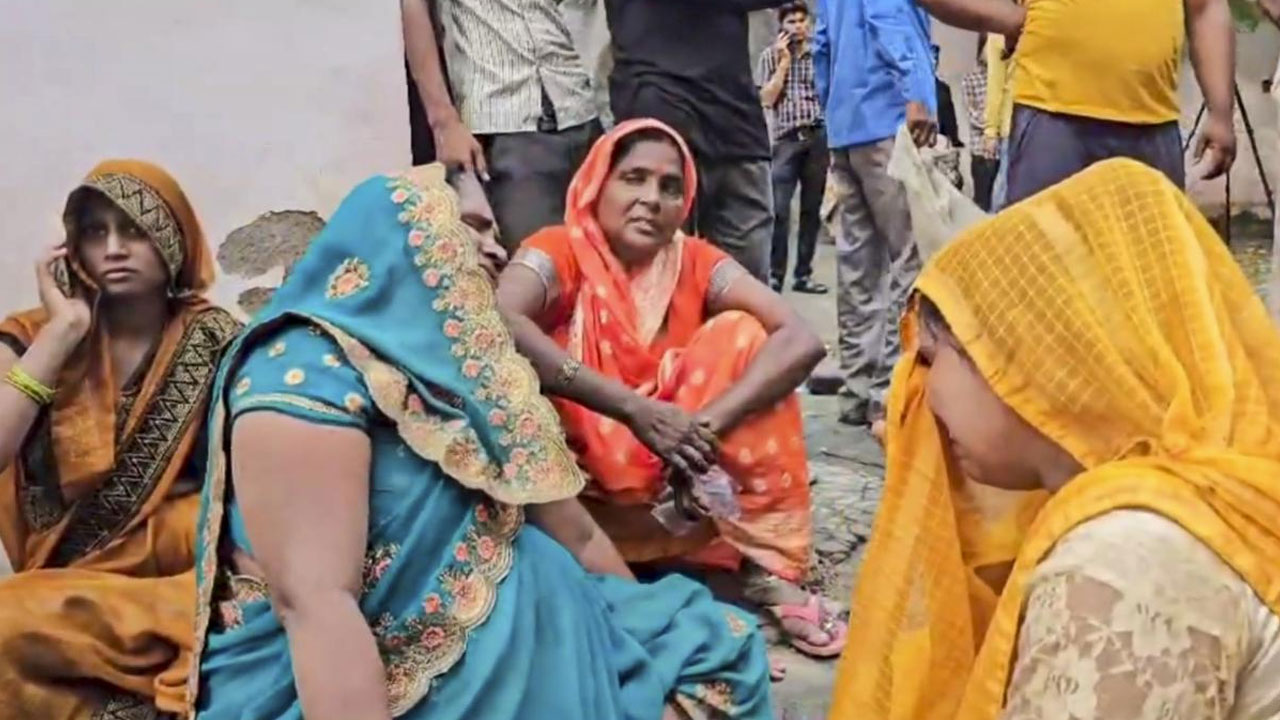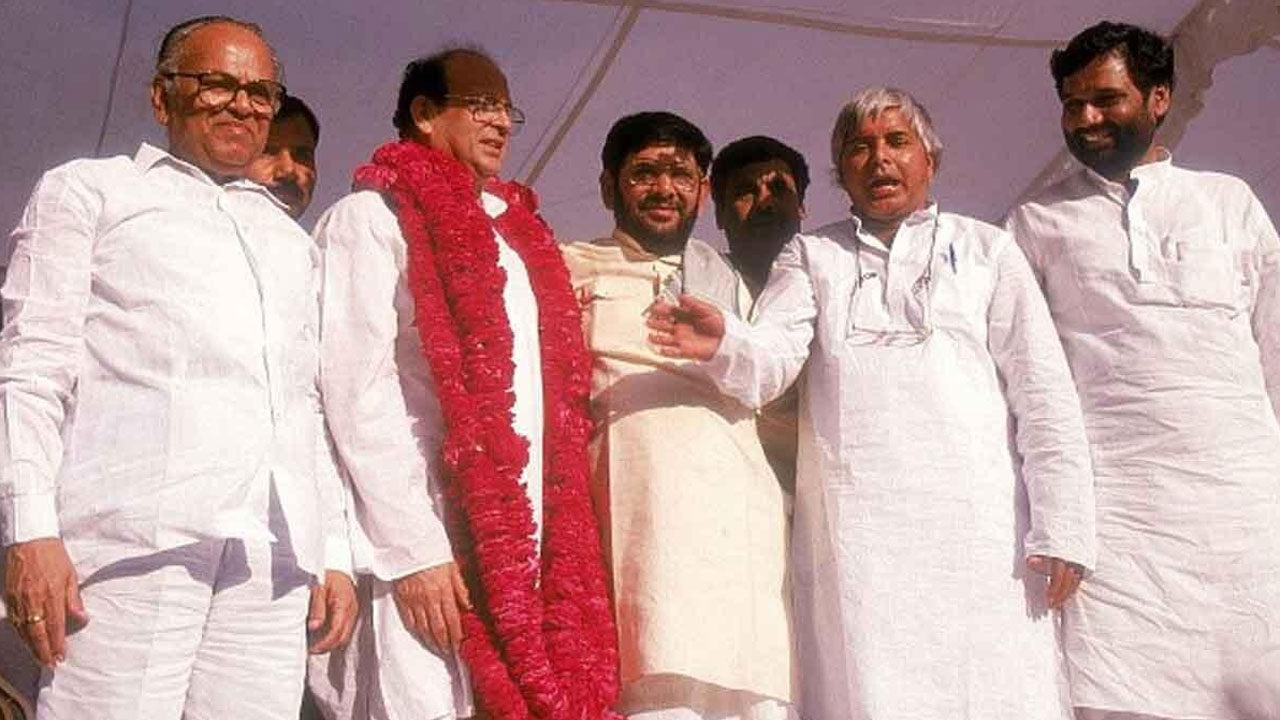Guru Ghasidas, a Bahujan saint born in Chhattisgarh, is still held in high esteem. Because of the socio-cultural movement he launched, a large number of people severed their ties with their castes and joined the Satnami sect. They included the chamar, teli, kurmi, luhar, ganda, lodhi and scores of other OBCs and Dalits. Guru Ghasidas would say that all humans are equal (Mankhe-mankhe ek barobar).
To reach out to the people with his Satnam philosophy, Guru Ghasidas conceptualized the Panthi dance. His was a cultural movement, which used dances and songs to take on the hypocritical dwij culture. The movement gathered steam and under its influence, people broke free from casteist taboos and began inter-dining and inter-marrying. Like Buddha, Kabir, Nanak and Raidas, Guru Ghasidas’ movement was also based on scientific reasoning. He said, “Mandirva mein ka kare jabo, apan ghat ke hee dev le manabo”, meaning “Why visit temples? You had better peep into your hearts.” Buddha had said the same thing: “Atta deepo bhavah”, meaning “Become your own lamp”. Along the same lines, Raidas had said, “Man changa, toh kauthat mein Ganga” (If your heart is pure, Ganga is right in your vessel).
Guru Ghasidas had also said, “Pathra ke devta hale nahin done, woh hale nahin dole”, meaning “when the god of stone can’t even move, why worship him”. Ghasidas, thus, relentlessly attacked idol worship, miracles, superstitions, social evils and Brahmanism. His movement forged a cultural, social and political unity among the Satnamis and its effect is still visible in Chhattisgarh. Today, Satnamis fight for their constitutionally mandated rights. They back every effort to secure and protect the social and constitutional rights of the Bahujan, including reservations.

The Satnami sect still poses a strong challenge to Brahmanisn. But it has turned into a caste, making the Satnamis Untouchables of sorts. The Panthi songs and dances, conceptualized by Ghasidas, used to be carriers of scientific thinking, created to awaken people, just like the couplets of Kabir. But over the past few years, brahmanical stories of miracles have crept into these songs and dances. That is not all. Guru Ghasidas is being projected as a Baba who performed miracles.
What is even worse is that mocking his beliefs, yagnas and other rituals similar to the ones held in brahmanical temples are being performed at Girdaupuri, Guru Ghasidas’ birthplace.
T.R. Khute, who is the author of a book titled Satnam Darshan, says that Guru Ghasidas’ movement sought to dismantle the caste system and unite society. Members of at least 100 castes joined this movement and started calling themselves Satnamis. According to Khute, Satnamis were counted as a sect distinct from Hinduism in the 1881 Census and the figure arrived at was 3.56 lakh. It was treated as an independent sect. However, in the 1931 Census, they were clubbed with Untouchables.
It might be mentioned here that in 1925-26, Pandit Sundarlal Sharma, who is often called the Gandhi of Chhattisgarh, took 72 Satnamis to a Brahmin Sabha in Kanpur, Uttar Pradesh, to re-convert them into Hinduism. However, they were chased away. Later, these Satnamis were tonsured and made to wear the sacred thread at a ceremony at Bhedaghat in Jabalpur, Madhya Pradesh. That marked the genesis of the Hinduization movement.

Another fact worth mentioning is that a gentleman called Nankeshar Lal Tandon, who lived in Akaltara in Chhattisgarh, had a calendar published around 1975 in which he himself posed as Guru Ghasidas. And now, the face of Tandon has become the face of Guru Ghasidas.
Ghasidas was a fierce opponent of idol worship. That’s why at his birthplace, Giraudpuri Dham, only his padukas (footwear) and his gaddi (seat) are displayed. Chhattisgarh’s first chief minister Ajit Jogi had announced that a Jaitkham (victory pillar) taller than the Qutub Minar would be built at Giraudpuri. The requisite budget was allocated but before the project could take off, Jogi’s government was replaced by a Bharatiya Janata Party regime led by Raman Singh. The new government had the Jaitkham built but only after it had built a temple at the site, complete with a gong. This was how the Rashtriya Swayamsevak Sangh (RSS) sneaked into the Guru Ghasidas’ world.
Currently, nothing is being done to inform the new generation about the Satnami philosophy and no efforts are being made to associate the people with it.
Obviously, there is a need to rekindle interest in the beliefs and the ideology of Guru Ghasidas and to ensure that the Satnami movement does not get entangled in the quagmire of caste. That is the only way to preserve, protect and spread Guru Ghasidas’ Satnam philosophy, founded on the principles of equality, justice and scientific thinking.
(Translated from the original Hindi by Amrish Herdenia)
Forward Press also publishes books on Bahujan issues. Forward Press Books sheds light on the widespread problems as well as the finer aspects of Bahujan (Dalit, OBC, Adivasi, Nomadic, Pasmanda) society, culture, literature and politics. Contact us for a list of FP Books’ titles and to order. Mobile: +917827427311, Email: info@forwardmagazine.in)





